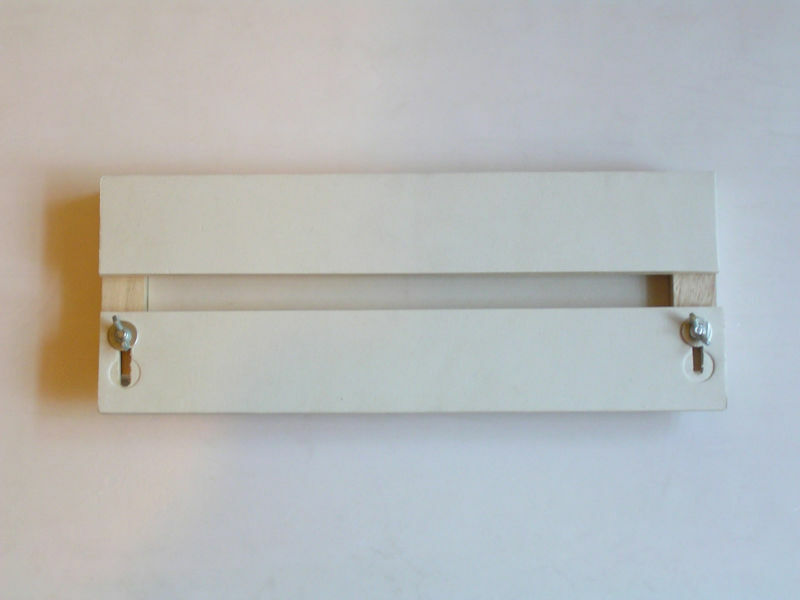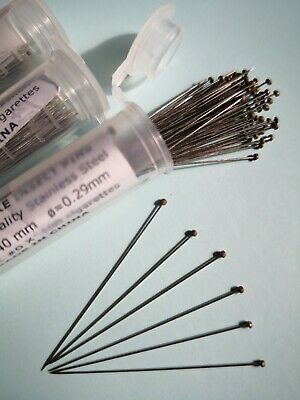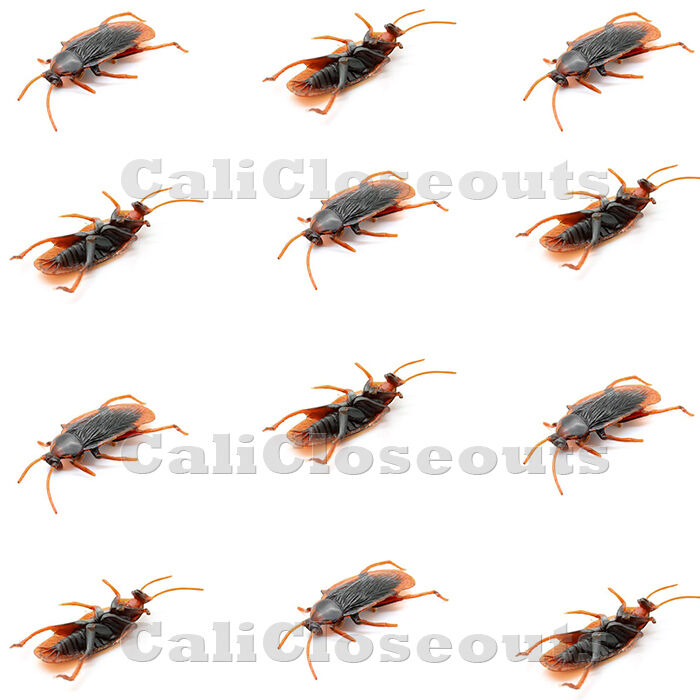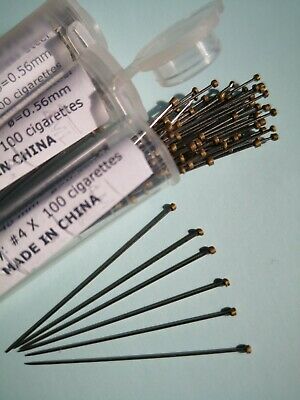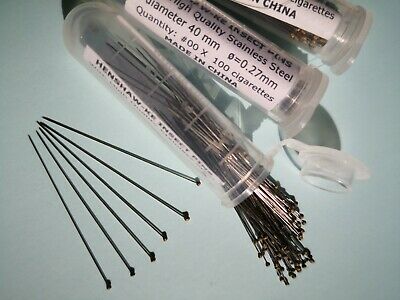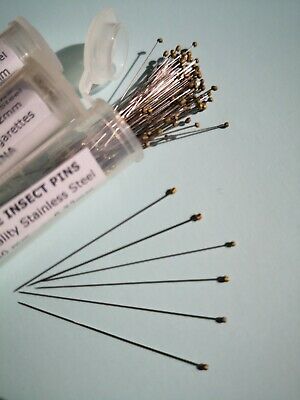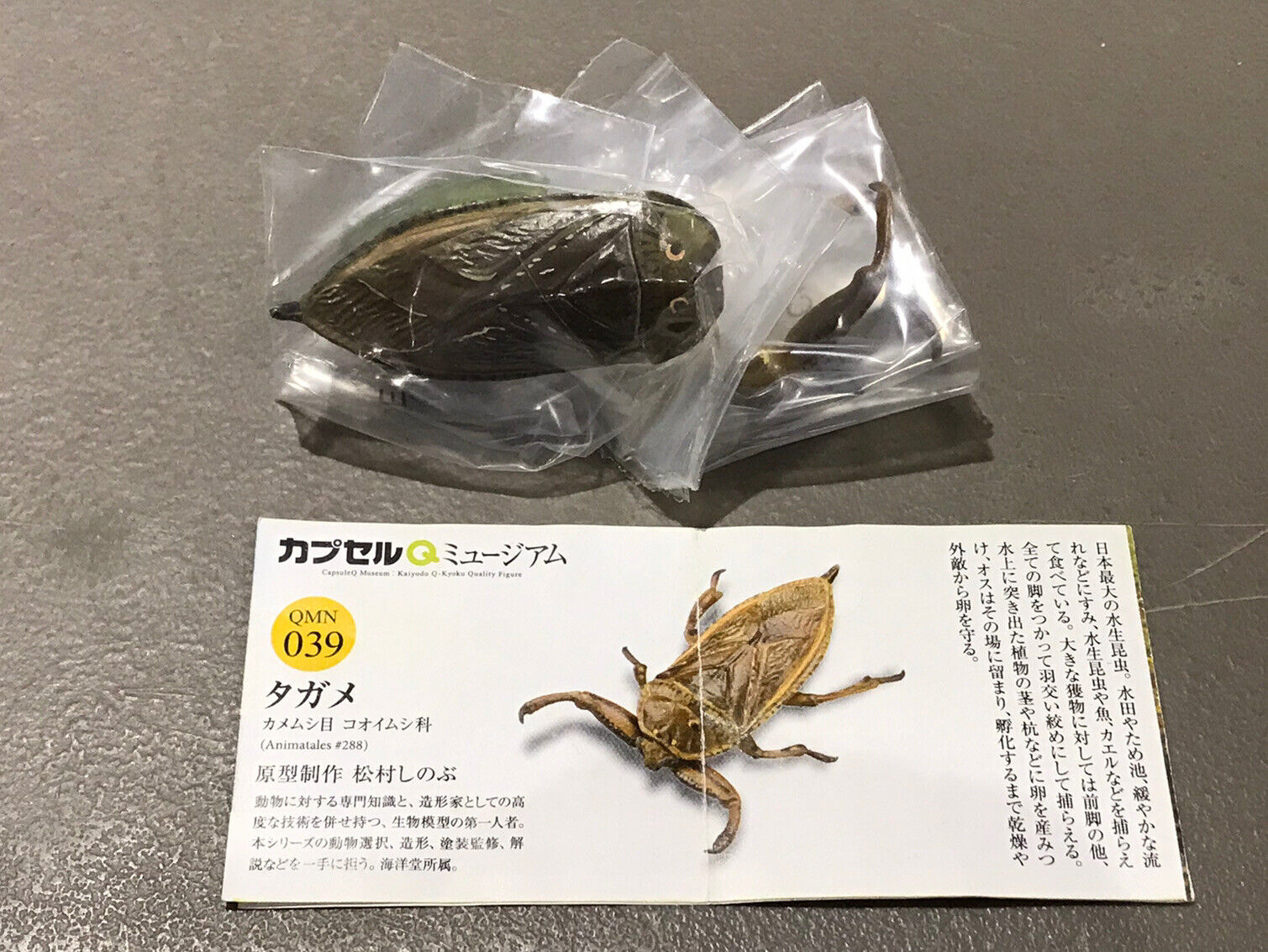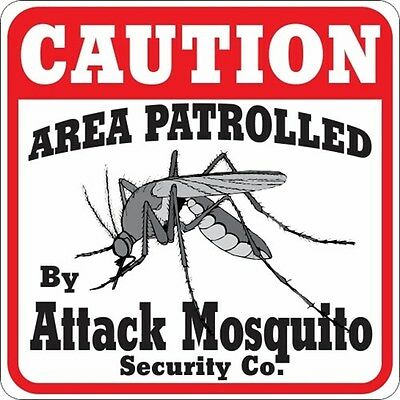-40%
Spotted Lanternfly Cicada Life Cycle Simplified Set Real Specimen Learning Aid
$ 8.54
- Description
- Size Guide
Description
Real simplified 3 stages Life Cycle of Spotted Lanternfly Cicada - Lycorma delicatula specimen encased in clear lucite material. The specimen is crystal clear, indestructible and transparent. Safe, authentic and completely unbreakable product put real life cycle right at your fingertips!Anyone can safely explore the life cycle from every angle.
It is clear enough for microscope observation.
Size of the lucite block is 75x75x9 mm (3x3x0.4 inch).
Each one comes with a cardboard box for easy storage.
Weight of the lucite block is 60 g and 90 g with packing box.
1) Eggs 2) Nymph 3) Adult
Selltotheworld
Spotted Lanternfly Cicada Life Cycle Simplified Set Real Specimen Learning Aid
Real simplified 3
stages
Life Cycle
of
Spotted Lanternfly Cicada -
Lycorma delicatula
specimen encased in clear lucite material. The specimen is crystal clear, indestructible and transparent. Safe, authentic and completely unbreakable product put real life cycle right at your fingertips!
Anyone can safely explore the life cycle from every angle.
It is clear enough for microscope observation.
Size of the lucite block is 75x75x9 mm (3x3x0.4 inch).
Each one comes with a cardboard box for easy storage.
Weight of the lucite block is 60 g and 90 g with packing box.
1) Eggs 2) Nymph
3) Adult
It is an ideal learning aid for students and kids and also a very good collectible item for every body.
This is a handmade real animal specimen craft. Each one will be a bit different (specimen size, color and posture) even in the same production batch.
The pictures in the listing are just for reference as we are selling multiple pieces with same pictures.
***
Spotted Lanternfly -
Lycorma delicatula
Order: Hemiptera Superfamily: Fulgoroidea Family: Fulgoridae Genus:
Lycorma
The spotted lanternfly or
Lycorma delicatula
(order Hemiptera, family Fulgoridae) is a planthopper native to China, India, and Vietnam. Although it has two pairs of wings, it jumps more than it flies. Its host plants are grapes, pines, stone fruits, and Malus spp. In its native habitat it is kept in check by natural predators or pathogens. It was accidentally introduced in Korea in 2006 and is since considered a pest. In September 2014, it was first spotted in the U.S..
The spotted lanternfly is originally native to parts of China, India, Vietnam and eastern Asia. It is an 1 inch long and a half inch wide planthopper belonging to the family of the fulgorid insects. The lantern analogy stems from the inflated front portion of the head, that was thought to be luminous. Adult lantern flies have a black head and grayish wings adorned with the name giving black spots. Their wing tips look like they are covered with tiny black bricks and grey mortar in between. In flight it displays red hind wings with black spots on the proximal third, a white wedge in the middle of the wing and a solid black wing tip. The abdomen is yellowish with black and white bands on the top and bottom. The lanternfly is a strong jumper and hops from location to location more than it flies. In Chinese medicine the spotted lanternfly is regarded poisonous and used for relief from swelling. It feeds on woody plants and non-woody plants, piercing the phloem tissue of foliage and young stems with its specialized mouth parts, and sucking its sap. The sugary fluid leaks and coats leaves and stems, which can encourage mold growth. It does not feed on fruit or the leaves per se. The lantern fly has a wide host range and innumerable host plants are known, including grapes, pines, the Rosaceae with stone fruits, and apple species.
Beginning in late April to early May, nymphs hatch from their egg cases. A nymph passes through several immature stages. In the first stage it is wingless and looks black with white spots. It then grows red patches in addition to the white spots. Next, it has red wing pads and a red upper body, before assuming the adult look of black head and grayish wings with black spots. Nymphs cannot hop, so they crawl to search for plants to feed on. Young nymphs appear to have a wider host range early on, which narrows as they grow older. As early as July, adults can be seen. In the fall, adults mate and lay eggs from late September through the onset of winter. In their native Indomalayan habitat they will lay their eggs preferably on the Tree of Heaven (
Ailanthus altissima
), which is an introduced invasive tree with toxic metabolites. This host choice is thought to have evolved as mechanism of protection from natural enemies. The lanternfly will lay eggs upon any smooth trunked tree, stone or vertical smooth surface, including man made items like vehicles, campers, yard furniture, farm equipment or other items stored outside. The egg masses contain 30-50 eggs, covered in a yellowish brown waxy deposit, the egg case. The lanternfly's life expectancy, is one year.[
The minimum temperature that will kill eggs was estimated to be between −3.4°C and −12.7°C on the basis of mean daily temperatures during winter.
Trees can develop weeping wounds of sap on their trunks. Heavy infestations can cause honey dew secretions to build up at the base of the tree, blackening the soil with fungal mats around the base of the tree. The sap may attract ants, bees, hornets and wasps to feed on. The plant may be stunted or even die.
Item Specifics
Type :
Collector Plate
Material :
Resin
Country/Region of Manufacture :
China
Modified Item :
No
Handmade :
Yes
Payment
By Paypal
Shipping
Free shipping cost.
We send the goods to USA, Canada, UK, Australia, New Zealand, EU countries and some other European and Asian countries by E-express, a kind of fast postal service by Hong Kong Post. It usually takes about 6 to 10 working days for delivery.
We send the goods to other countries by registered airmail and will take about 8 to 14 working days for delivery.
Returns
Returns: We accept returns with any reason in 30 days.
Contact Us
We will answer buyer messages within 24 hours during working days.
Selltotheworld
From all around the world
DESCRIPTION
PAYMENT
SHIPPING
RETURN POLICY
CONTACT US
Spotted Lanternfly Cicada Life Cycle Simplified Set Real Specimen Learning Aid
Real simplified 3
stages
Life Cycle
of
Spotted Lanternfly Cicada -
Lycorma delicatula
specimen encased in clear lucite material. The specimen is crystal clear, indestructible and transparent. Safe, authentic and completely unbreakable product put real life cycle right at your fingertips!
Anyone can safely explore the life cycle from every angle.
It is clear enough for microscope observation.
Size of the lucite block is 75x75x9 mm (3x3x0.4 inch).
Each one comes with a cardboard box for easy storage.
Weight of the lucite block is 60 g and 90 g with packing box.
1) Eggs 2) Nymph
3) Adult
It is an ideal learning aid for students and kids and also a very good collectible item for every body.
This is a handmade real animal specimen craft. Each one will be a bit different (specimen size, color and posture) even in the same production batch.
The pictures in the listing are just for reference as we are selling multiple pieces with same pictures.
***
Spotted Lanternfly -
Lycorma delicatula
Order: Hemiptera Superfamily: Fulgoroidea Family: Fulgoridae Genus:
Lycorma
The spotted lanternfly or
Lycorma delicatula
(order Hemiptera, family Fulgoridae) is a planthopper native to China, India, and Vietnam. Although it has two pairs of wings, it jumps more than it flies. Its host plants are grapes, pines, stone fruits, and Malus spp. In its native habitat it is kept in check by natural predators or pathogens. It was accidentally introduced in Korea in 2006 and is since considered a pest. In September 2014, it was first spotted in the U.S..
The spotted lanternfly is originally native to parts of China, India, Vietnam and eastern Asia. It is an 1 inch long and a half inch wide planthopper belonging to the family of the fulgorid insects. The lantern analogy stems from the inflated front portion of the head, that was thought to be luminous. Adult lantern flies have a black head and grayish wings adorned with the name giving black spots. Their wing tips look like they are covered with tiny black bricks and grey mortar in between. In flight it displays red hind wings with black spots on the proximal third, a white wedge in the middle of the wing and a solid black wing tip. The abdomen is yellowish with black and white bands on the top and bottom. The lanternfly is a strong jumper and hops from location to location more than it flies. In Chinese medicine the spotted lanternfly is regarded poisonous and used for relief from swelling. It feeds on woody plants and non-woody plants, piercing the phloem tissue of foliage and young stems with its specialized mouth parts, and sucking its sap. The sugary fluid leaks and coats leaves and stems, which can encourage mold growth. It does not feed on fruit or the leaves per se. The lantern fly has a wide host range and innumerable host plants are known, including grapes, pines, the Rosaceae with stone fruits, and apple species.
Beginning in late April to early May, nymphs hatch from their egg cases. A nymph passes through several immature stages. In the first stage it is wingless and looks black with white spots. It then grows red patches in addition to the white spots. Next, it has red wing pads and a red upper body, before assuming the adult look of black head and grayish wings with black spots. Nymphs cannot hop, so they crawl to search for plants to feed on. Young nymphs appear to have a wider host range early on, which narrows as they grow older. As early as July, adults can be seen. In the fall, adults mate and lay eggs from late September through the onset of winter. In their native Indomalayan habitat they will lay their eggs preferably on the Tree of Heaven (
Ailanthus altissima
), which is an introduced invasive tree with toxic metabolites. This host choice is thought to have evolved as mechanism of protection from natural enemies. The lanternfly will lay eggs upon any smooth trunked tree, stone or vertical smooth surface, including man made items like vehicles, campers, yard furniture, farm equipment or other items stored outside. The egg masses contain 30-50 eggs, covered in a yellowish brown waxy deposit, the egg case. The lanternfly's life expectancy, is one year.[
The minimum temperature that will kill eggs was estimated to be between −3.4°C and −12.7°C on the basis of mean daily temperatures during winter.
Trees can develop weeping wounds of sap on their trunks. Heavy infestations can cause honey dew secretions to build up at the base of the tree, blackening the soil with fungal mats around the base of the tree. The sap may attract ants, bees, hornets and wasps to feed on. The plant may be stunted or even die.
Item Specifics
Type :
Collector Plate
Material :
Resin
Country/Region of Manufacture :
China
Modified Item :
No
Handmade :
Yes
Payment
By Paypal
Shipping
Free shipping cost.
We send the goods to USA, Canada, UK, Australia, New Zealand, EU countries and some other European and Asian countries by E-express, a kind of fast postal service by Hong Kong Post. It usually takes about 6 to 10 working days for delivery.
We send the goods to other countries by registered airmail and will take about 8 to 14 working days for delivery.
Returns
Returns: We accept returns with any reason in 30 days.
Contact Us
We will answer buyer messages within 24 hours during working days.
All right reserved.
Shop Category
Store Home
Fossils
◈ Insects
◈ Plants
◈ Trilobite
◈ Sea animals
Tektite
◈ Loose lots
◈ Single stone
◈ Silver wired pendant
◈ Tiktite hanger
Lapis Lazuli
▷ Polished stones
♢ Loose lots
♢ Single stones
▷ Rough stones
♢ Loose lots
♢ Single stone
◈ Craft items
Turquoise
◈ Natural turquoise
◈ Turquoise substitutes
Stone carving
Rough Stone & mineral
◈ Single piece
◈ Loose lots
Polished Stone & mineral
◈ Single piece
◈ Loose lots
Rough ruby & sapphire
◈ Ruby
◈ Sapphire
Star Ruby & Sapphire
◈ Star Ruby - Opaque
◈ Star Ruby - Transparent
◈ Blue Star Sapphire
◈ Star Sapphire - other colors
Animal specimen items
◈ Life cycle
◈ Collection set
◈ Key ring
◈ Bracelet or bangle
◈ Necklace or pendant
◈ Magnet
◈ Ring
◈ Hanger
◈ Cabochon
◈ Sphere, ball
◈ Laminated specimen
◈ Computer mouse
◈ Stapler
◈ Pen
◈ Bottle Opener
◈ Dome paperweight
◈ Earring
◈ Skeleton
◈ Fish
▷ Single specimens
♢ Spider
♢ Scorpion
♢ Beetle
♢ Marine animal
♢ Bug
♢ Bee, wasp, hornet
♢ Other insects
♢ Bat
♢ Other animal
▷ Butterfly
♢ Butterfly paperweight
♢ Laminated butterfly
Plant specimen
◈ Flower
◈ Leaf
◈ Life Cycle
◈ Collection Set
◈ Laminated items
◈ Seed or root
Stone, mineral, fossil box set
Jewelry crafts
Paper cuts
◈ Small set
Other
Hot Item
Black Indochinite Tektite Stone 10 pieces Plastic Box Set Natural Specimen Kit
USD 16.00
Tarantula Spider Real Specimen 6.7 cm Acrylic Dome Paperweight White bottom
USD 17.00
Bat Skeleton GREATER BAMBOO BAT in Clear Block Education Real Animal Specimen
USD 18.00
10 Mohs Scale Stone Set clear plastic box Learning Real Specimen Kit
USD 16.00
Chinese Water Snake Skeleton in 110x45x18 mm Block Education Animal Specimen
USD 24.00
Picture
New List Item
Large Spodumene Kunzite Hiddenite Triphane Crystal 269.5 Carat 44x35x19 mm 53.9g
USD 22.00
Very Large Spodumene Kunzite Hiddenite Triphane 875.5 Carat 100x55x13 mm 175.1 g
USD 57.99
Turquoise Stone Round 8x8 mm Flat Cabochon 58 Carat 32 pieces 11.6 gram
USD 21.99
Turquoise Stone Round 6x6 mm Flat Cabochon 33 Carat 36 pieces 6.6 gram
USD 17.99
Turquoise Stone Round 6x6 mm Flat Cabochon 25.5 Carat 27 pieces 5.1 gram
USD 17.00
Custom Item
Powered by SoldEazy







